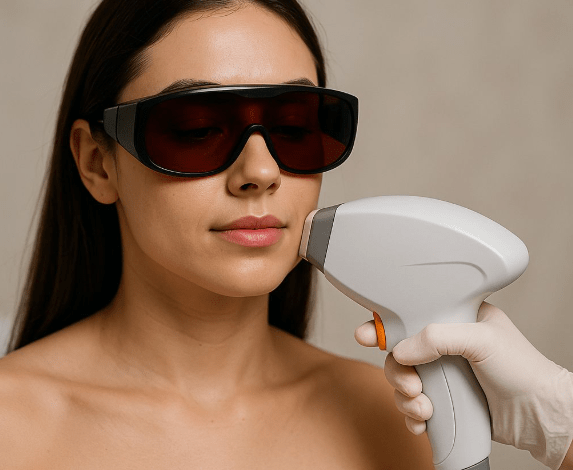Full Body Laser Hair Removal for Men and Women: Understanding Technologies and Key Differences

Unwanted hair has always been part of human grooming. For some, it is a small inconvenience, while for others, it becomes a source of daily frustration. Razors provide only a fleeting solution. Waxing strips away hair at the root but often leaves redness, ingrown hairs, and the need to book yet another session a few weeks later. Threading and sugaring offer variations of the same temporary relief. It is no surprise that more people are now seeking methods that promise longer-lasting smoothness. Among these, full body laser hair removal has become one of the most discussed choices for both men and women.
The promise of laser hair removal is not absolute permanence, but it does offer lasting reduction. Fewer hairs grow back, and those that do are finer and lighter. This makes grooming easier and less frequent. While the science behind it has been established for decades, the technology itself has advanced, with multiple devices now available. Each uses light energy in a slightly different way, making some better suited to certain skin tones, hair colors, and body areas than others. To truly understand whether it is right for you, it helps to look at how the technology works, what options exist, and why men and women often approach treatment from different perspectives.
How Light Becomes a Tool for Hair Reduction
At its foundation, laser hair removal relies on a principle known as selective photothermolysis. While the word is long, the idea is simple. Light of a specific wavelength is absorbed by the pigment melanin, which is abundant in hair. Once absorbed, the light energy converts to heat. That heat travels down into the follicle, disrupting its ability to generate a new hair shaft.
The process is most efficient when there is a contrast between hair and skin, such as dark hair against lighter skin. In such cases, the follicle absorbs the majority of the energy, while the surrounding skin remains largely untouched. With deeper skin tones, the presence of melanin in the epidermis increases, which means lasers must be adjusted carefully to avoid heating the skin itself.
Timing also matters. Hair grows in cycles. In the active anagen phase, the follicle is attached to the hair shaft and filled with melanin. Lasers target this phase best. Because not all hairs enter this stage at once, sessions are spaced out to catch more follicles over time. It typically takes several visits for the results to become clear and consistent.
The Technologies That Define Treatment
Over the years, several types of lasers have been developed for hair removal. Each operates at a different wavelength, which determines how deeply the light penetrates and how it interacts with skin and hair.
The Alexandrite laser, first popularized in the early 2000s, is known for its speed. Operating at 755 nanometers, it can cover wide areas quickly, which makes it efficient for legs, arms, or the back. Patients with lighter skin tones often achieve strong results with fewer passes. However, the same feature that makes it fast on fairer complexions can increase the risk of pigment changes in darker skin.
Diode lasers, typically set around 800 to 810 nanometers, strike a balance between depth and selectivity. They penetrate more deeply than Alexandrite devices and handle coarse hair effectively, making them versatile for both men and women. Built-in cooling systems are common with diode lasers, which helps with comfort during longer sessions.
For those with deeper skin tones, Nd:YAG lasers are often the safest choice. With a wavelength of 1064 nanometers, they bypass much of the epidermal melanin, reducing the chance of burns or discoloration. Their energy reaches deeper into the skin, making them effective on thicker hair as well. The trade-off is that very fine or light hair may respond less efficiently, often requiring more sessions to reach the desired result.
Ruby lasers, operating at 694 nanometers, hold historical importance as some of the first devices approved for hair removal. They are best for very light skin tones but have largely been replaced by newer technologies due to slower speed and higher risk on medium to dark complexions.
Finally, Intense Pulsed Light, or IPL, deserves mention even though it is not a true laser. IPL devices release a broad spectrum of light filtered to target melanin. Because the light is less focused, treatments may require more sessions and results can vary. However, IPL systems cover large areas quickly, which keeps them popular in certain settings.
Gender Differences in Treatment
Although the technology remains the same, men and women often have different experiences with full body laser hair removal. The first difference lies in hair density. Men typically have coarser and thicker hair, especially on the chest, back, and beard area. These follicles absorb more energy, which can make treatments more uncomfortable and sometimes require higher settings or additional sessions. Women usually focus on legs, underarms, bikini line, and face. The hair in these areas is often finer, which sometimes responds faster to treatment.
Hormones play a significant role as well. In men, testosterone drives much of the hair growth pattern, leading to denser coverage on the torso and face. In women, conditions such as polycystic ovary syndrome can lead to unwanted hair growth on the chin, upper lip, or abdomen. These hormonal factors explain why maintenance sessions are more common for certain individuals, even after completing the initial course of treatments.
Pain perception is another consideration. While tolerance varies by individual, clinical reports suggest men often describe higher levels of discomfort due to the thickness of their hair shafts. Advances such as integrated cooling, pulse stacking, and topical anesthetics have helped reduce this difference, but it remains a common observation in practice.
Considering Skin Types
The Fitzpatrick scale, which classifies skin by how it reacts to sun exposure, is an essential tool in laser hair removal. Fair to olive tones, known as Types I through III, often respond well to Alexandrite or diode lasers. Medium to dark tones, Types IV through VI, require safer options like Nd:YAG lasers to minimize risks.
Each skin type demands adjustments in energy, pulse duration, and cooling. Providers must carefully balance these factors to target the follicle without damaging surrounding tissue. This is why professional evaluation is considered crucial. A device that works beautifully on one person may not be appropriate for another, even if they are both seeking full body treatment.
Sessions, Results, and Maintenance
One of the most frequent questions patients ask is: how many sessions will I need? The answer varies, but most people require between six and ten sessions spread over several months. Women treating legs and underarms often see results sooner, while men treating dense areas like the back or chest may require more visits.
Results build gradually. After the first session, shedding occurs within a few weeks. With each successive session, regrowth slows, hair becomes finer, and coverage thins out. After a full course, most people enjoy significant reduction. However, hair is influenced by genetics and hormones, so some regrowth is expected. Maintenance sessions, often once or twice a year, help preserve results.
Safety Profile and Possible Side Effects
When performed correctly, laser hair removal is considered safe. Common short-term effects include redness and swelling around the treated follicles. These usually resolve within hours to days. Temporary pigment changes can occur, especially in darker skin, but are less likely with the right device and settings.
Rare complications include blistering, scarring, or lasting pigment changes. The risk rises when treatments are performed without proper assessment or with unsuitable devices for the patient’s skin type. This is why medical oversight is often emphasized in clinical literature.
Alternatives That Still Matter
Although lasers dominate the conversation, traditional methods remain relevant. Shaving is quick and accessible but requires daily or near-daily upkeep. Waxing removes hair at the root, giving smoothness for several weeks, but it can be painful and sometimes causes ingrown hairs. Sugaring, using a paste of sugar, lemon, and water, offers a natural variation of waxing with similar results.
Electrolysis is another method worth mentioning. By inserting a fine probe into each follicle and applying electrical current, it destroys the growth center. It is permanent but time-intensive, which makes it impractical for large areas. Still, for people with very light or white hair that lasers cannot target, electrolysis remains a useful option.
Supporting Skin Health Alongside Hair Removal
Whichever technology is chosen, supporting the skin before and after treatment is vital. Sun protection is the most important factor. Ultraviolet exposure can increase the risk of pigment changes, so patients are advised to use broad-spectrum sunscreen daily. Gentle cleansers, fragrance-free moisturizers, and avoidance of harsh exfoliants help the skin recover smoothly.
Hydration, balanced nutrition, and adequate sleep also play roles in healing. While these habits may seem simple, they make a noticeable difference in how skin responds over the long term.
Looking Ahead: The Future of Hair Removal
Research continues to refine laser hair removal technologies. In recent years, dual-wavelength systems that combine Alexandrite and Nd:YAG in one device have gained attention. These platforms allow practitioners to switch settings based on the patient’s skin type or even combine wavelengths in a single pulse.
Cooling systems have also advanced, moving from simple air blowers to sophisticated contact cooling that monitors skin temperature in real time. Studies published between 2021 and 2024 highlight how these innovations improve comfort while reducing risks. There is also interest in using artificial intelligence to adjust parameters dynamically during treatment. While such features are still emerging, they suggest a future where hair removal becomes more personalized and universally safe.
Final Thoughts
Full body laser hair removal is not a one-size-fits-all procedure. The choice of technology depends on skin type, hair density, and individual goals. Men and women approach it differently because of biology, hormones, and cultural expectations. Yet the motivation often converges: a desire for long-lasting smoothness, confidence, and freedom from constant grooming.
Understanding the differences between Alexandrite, diode, Nd:YAG, Ruby, and IPL systems provides a foundation for informed decision-making. Considering factors such as number of sessions, potential side effects, and maintenance needs brings expectations closer to reality. With technology continuing to evolve, the treatment is becoming safer, faster, and more accessible than ever.
For readers who wish to explore professional options, many clinics now provide comprehensive full-body laser hair removal services that adapt to diverse skin tones and hair types while prioritizing safety and long-term results.



